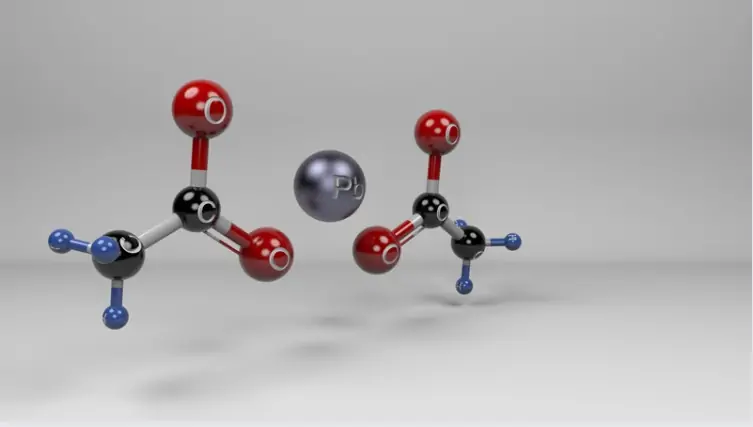Acetates are a fascinating class of chemical compounds that play a crucial role in various industrial and biological processes. They are salts or esters derived from acetic acid, a simple carboxylic acid with the chemical formula CH₃COOH. Acetates have a wide range of applications, from materials science to environmental management, showcasing their versatility and significance in both everyday life and advanced technologies.
Chemical Structure and Properties
Acetates generally have the general formula CH₃COO⁻, where the acetate ion (CH₃COO⁻) forms the basis of these compounds. This ion consists of a carbonyl group (C=O) bonded to a methyl group (CH₃) with a negative charge distributed across the oxygen atoms. The resulting compounds are often salts or esters formed when acetic acid reacts with a base or alcohol.
In terms of properties, acetates are typically characterized by their solubility in water and their ability to form a variety of salts and esters. These properties make them highly useful in numerous applications, ranging from food preservation to industrial manufacturing.
Industrial Applications
- Textiles and Materials: One of the most notable uses of acetates is in the production of textile fibers. Acetate fibers, derived from cellulose acetate, are used to create a range of fabrics that are valued for their silk-like feel and durability. These fibers are commonly found in clothing, upholstery, and other textile products. They also have applications in the production of photographic films and coatings.
- Plastics and Polymers: Acetates are integral to the production of various plastics and polymers. For instance, cellulose acetate is a key component in the manufacture of plastic products like eyeglass frames, tool handles, and film bases. Similarly, butyl acetate is used as a solvent in paints, coatings, and adhesives due to its ability to dissolve a wide range of substances.
- Food Industry: In the food industry, acetates such as sodium acetate are used as food additives. They serve as preservatives and flavoring agents, enhancing the taste and shelf life of processed foods. Sodium acetate is also utilized in the production of vinegar and as a buffer in certain food products.
Biological and Environmental Significance
- Biological Processes: In biological systems, acetates play a critical role in metabolic pathways. Acetyl-CoA, a central metabolite in the Krebs cycle, is involved in energy production and the synthesis of fatty acids. Acetates also participate in various biochemical processes, including the synthesis of neurotransmitters and the regulation of gene expression.
- Environmental Management: Acetates are employed in environmental management practices. For instance, they are used in water treatment processes to neutralize acidic conditions. Additionally, biodegradable acetates are being explored as alternatives to conventional plastics, reducing the environmental impact of plastic waste.
Challenges and Future Directions
Despite their many advantages, acetates present certain challenges. The environmental impact of synthetic acetate products, particularly those derived from petroleum-based sources, raises concerns about sustainability. However, research is ongoing to develop more eco-friendly alternatives, such as biodegradable acetates and greener production methods.
Moreover, advancements in material science are driving innovations in acetate-based materials. Researchers are exploring new applications and improving the performance of acetate-derived products, which may lead to enhanced functionalities and reduced environmental impact in the future.
Conclusion
Acetates are a diverse group of compounds with a wide range of applications that touch various aspects of daily life and industrial processes. From their role in textile and plastic manufacturing to their importance in biological systems and environmental management, acetates are integral to modern technology and sustainability efforts. As research continues to uncover new uses and improve existing applications, acetates will likely remain a key player in both technological advancement and environmental stewardship.
FAQs
1. What are acetates?
Acetates are chemical compounds derived from acetic acid (CH₃COOH). They can be either salts or esters of acetic acid and have the general formula CH₃COO⁻. They are known for their versatility and are used in various industries, including textiles, plastics, and food.
2. What are some common types of acetates?
- Sodium Acetate (CH₃COONa): Used as a food additive and buffer.
- Cellulose Acetate: Used in textiles, photographic films, and as a plastic.
- Butyl Acetate (CH₃COOC₄H₉): Used as a solvent in paints, coatings, and adhesives.
- Acetate Salts: Such as calcium acetate and magnesium acetate, used in various industrial and environmental applications.
3. How are acetates used in the textile industry?
Acetates, particularly cellulose acetate, are used to produce fibers with a silk-like feel. These fibers are utilized in clothing, upholstery, and other textiles. The material is valued for its smooth texture and ability to hold vibrant colors.
4. What role do acetates play in the food industry?
In the food industry, acetates like sodium acetate are used as preservatives and flavoring agents. They help enhance the taste and extend the shelf life of processed foods. Sodium acetate is also involved in the production of vinegar.
5. How are acetates used in plastics and polymers?
Acetates are essential in creating various plastic products. For example, cellulose acetate is used in making eyeglass frames, tool handles, and film bases. Butyl acetate is employed as a solvent in paints, coatings, and adhesives due to its effectiveness in dissolving many substances.
6. Are acetates environmentally friendly?
Acetates can present environmental challenges, particularly those derived from petroleum-based sources. However, there is ongoing research into biodegradable acetates and more sustainable production methods to reduce environmental impact. Biodegradable acetate materials are being explored as alternatives to traditional plastics.
7. What is the significance of acetates in biological systems?
In biological systems, acetates are crucial for several metabolic processes. Acetyl-CoA, derived from acetates, plays a central role in energy production and the synthesis of fatty acids. Acetates are also involved in the synthesis of neurotransmitters and the regulation of gene expression.
8. How are acetates used in environmental management?
Acetates, such as sodium acetate, are used in water treatment processes to neutralize acidic conditions. They are also being investigated for their potential to reduce plastic waste through the development of biodegradable materials.
9. What are the potential health and safety concerns related to acetates?
While many acetates are generally safe when used as intended, some, particularly in high concentrations or improper usage, can pose health risks. For instance, butyl acetate is a solvent that can be harmful if inhaled in large amounts. Proper handling and adherence to safety guidelines are essential to minimize risks.
10. How are acetates produced?
Acetates are produced through various chemical processes. Salts are typically formed by reacting acetic acid with a base, such as sodium hydroxide. Esters are created by reacting acetic acid with an alcohol in a process called esterification.
11. What are some emerging trends in acetate research?
Current research focuses on developing more sustainable acetate materials, such as biodegradable plastics, and improving the performance of acetate-based products. Innovations in materials science are driving new applications and enhancing the environmental profile of acetates.
12. Can acetates be recycled?
Recycling of acetate materials is possible, though the processes can vary depending on the type of acetate. For example, cellulose acetate can be recycled into new products, but the efficiency of the process depends on the quality and type of acetate. Efforts are ongoing to improve recycling methods and increase the sustainability of acetate materials.











